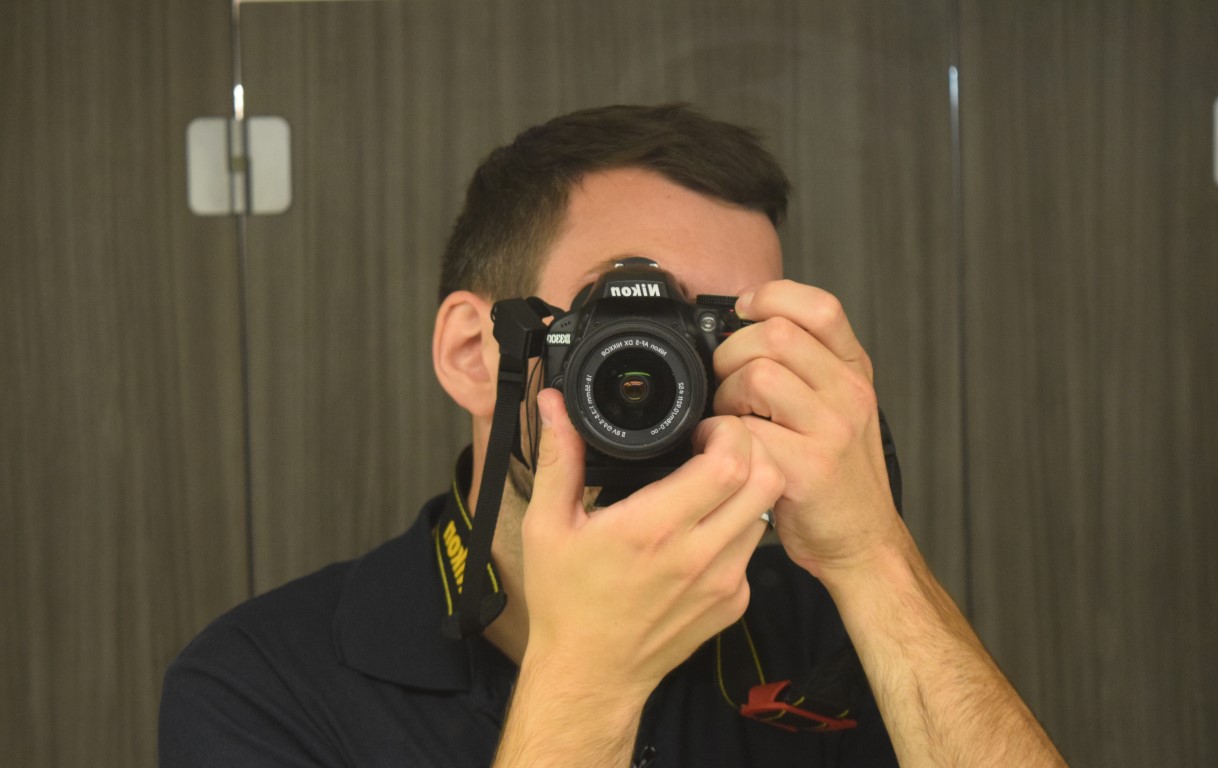A client recently asked me, “what type of camera best suits your needs for surveys?”
I enjoy photography as it is, and always wishing to learn and practice so I use a DSLR. For site I use a Nikon D3300 and an 18-55mm lens.
A lot of my inspections include shopping centers and warehouses. There are pros and cons to carrying a DSLR around, but I do prefer it overall.
DSLR is a “digital single lens reflex” camera. The single lens reflex refers to the mirror which reflects the view from the lens for you to see in the viewfinder. When the shutter fires, the mirror moves out of the way for light from the lens to expose the sensor, creating the image (before digital, the same thing happened but the light would expose the film instead of a sensor). Non SLR digital cameras, are sometimes called a ‘mirrorless’ camera or a ‘point and shoot’.
The D3300 is an entry level camera, meaning it’s market is for those wanting an introduction to learning how to use an SLR. So it has a cropped sensor, a smaller battery, and no auto focus motor (newer DX lenses have their own focus motor anyway). This makes for a smaller form factor SLR. It comfortably hangs around my neck as I walk around site, and sometimes I just use one hand whilst the other is holding a tablet.
Next important thing is workflow. Outside of work, I shoot in RAW. When reviewing and finishing the images on my machine, I used Adobe DNG Convertor to batch convert the raw images into digital negatives, then I use Bridge to batch edit any under exposed images, or just play around and get creative.
The changes I make when using an SLR for work, are that I switch from shooting in RAW to JPG, and from manual to auto. This saves a lot of time. When I find myself in either low light, or where warehouse windows cause all of the internal walls and roof soffit to be very underexposed, I’ll switch from auto to manual and control the shutter speed myself, to give a longer exposure time to ensure the walls come out. This does flush out the windows however. So what I can do is shoot manual and raw for that particular situation, then use adobe RAW editor to lighten all shadows and darken all highlights to provide a high dynamic range in the image (our eyes can see HDR but cameras tend to require some post shoot trickery to do it). I’d only go out of my way to do this if the underexposed thing I’m trying to shoot is a critical building issue.
The 18-55mm lens is a general use optical zoom lens. A good all rounder that lets me shoot general pics, but zoom into rainwater goods and parts of roofs. The high resolution of the image means if the zoom isn’t good enough, you can still crop zoom in the office and get a good result. A favorite trick of mine is to spot vantage points from other windows to get good roof photos. Best time this happened was for a warehouse with a large floorplate. I wasn’t allowed on the roof without fall arrest equipment and I couldn’t see anything from the ground. Across the road was a control tower used by a shipping container company. When I asked my client, they had a good relationship with their neighbour and I was allowed to go up the control tower and zoom into the entire roof. The client saved $2k on a cherry picker and I got what I needed, and some great shots of the Port of Brisbane 🙂
 Some vantage points are better than others
Some vantage points are better than others
If you are choosing one between Nikon, Canon and Sony, there’s really not much in it. Know that when you commit, its likely you’ll stay because your lenses will be compatible. At the end of the day it’ll be what you feel is most comfortable using. I chose Nikon purely based on the fact I felt whilst Canon and Sony manufacture lots of things, Nikon focus on cameras. A lot of other metrics between them are on a par.
CM